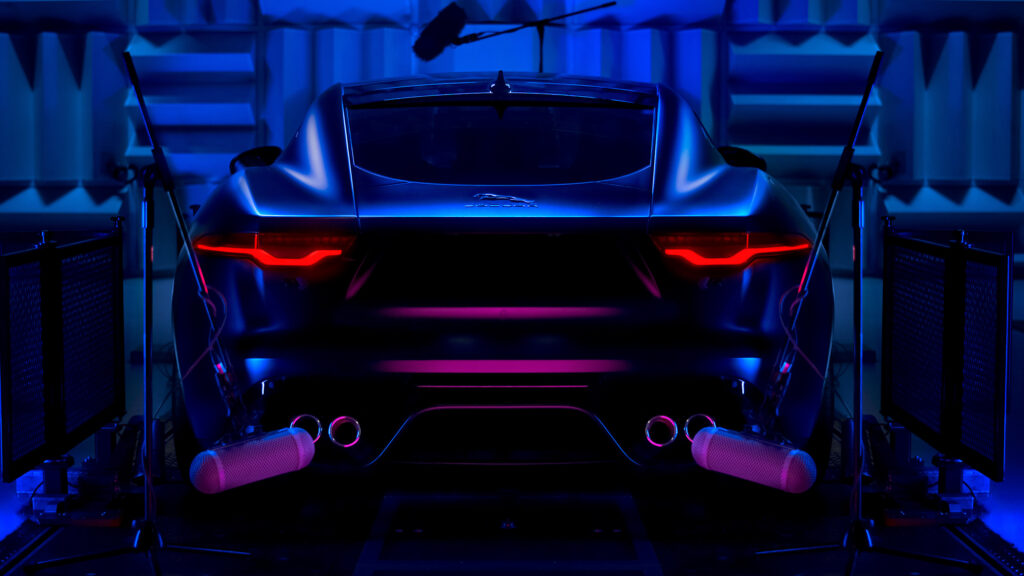From 2025, every new Jaguar released will be electric and while some may consider that good news, many will be disappointed to know this means the end for the brand’s internal combustion engines, including the 5.0-liter supercharged V8 of the F-Type.
With this in mind, Jaguar has shared sound recordings of the F-Type V8 with the British Library to ensure that future generations can experience and enjoy the intoxicating exhaust note of the company’s final combustion-powered sports car.
Jaguar recorded sound clips of the F-Type R 75 in the semi-anechoic chamber at the Gaydon Engineering Center. This is the same facility where the car’s exhaust note was originally tuned and for the recordings, the F-Type R performed a number of gear shifts and acceleration runs.
Read: Jaguar F-Type Riding Into The Sunset, Getting 75 Edition As A Final Sendoff
“The F-TYPE’s supercharged V8 makes a unique sound because of the meticulous optimization work we applied to the entire powertrain, most of all to the intake and exhaust systems – more than 85 iterations before we first launched the car, and developed continuously ever since,” Jaguar senior sound engineer Charles Richardson described. “The culmination of that work – the sounds you experience driving the F-TYPE R 75 – is something we want to be available for generations to come. Archiving it with the British Library allows us to do that, and that’s something we’re very proud of.”
The two clips shared to the British Library perfectly capture the essence of the potent V8 and while listening to a recording isn’t quite the same as enjoying the sound in the flesh, it’s exciting enough. Future generations may never hear a combustion-powered car in person and will have to go to museums to discover what they sounded like. Now that’s sad.
“We’re delighted to be able to preserve recordings of the F-TYPE V8 engine for Jaguar enthusiasts and listeners around the world,” the British Library’s curator of wildlife and environmental sounds, Cheryl Tipp, added. “As production of this engine comes to a close, this unique noise takes its place in the nation’s archive alongside other sounds that can no longer be heard today.”




